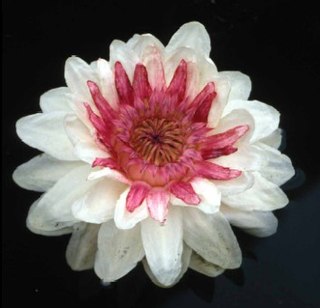Ironwood is a common name for many woods or plants that have a reputation for hardness, or specifically a wood density that is heavier than water, although usage of the name ironwood in English may or may not indicate a tree that yields such heavy wood.

Rosewood refers to any of a number of richly hued timbers, often brownish with darker veining, but found in many different hues.
Swartzia macrosema is a species of flowering plant in the family Fabaceae. It is found only in Ecuador. Its natural habitat is subtropical or tropical moist montane forests.

Swartzia is a genus of legume in the family Fabaceae. It was named in honor of Swedish botanist Olof Swartz and contains about 200 species. Swartzia is restricted in its geographical distribution to the New World Tropics, where it occurs primarily in lowland rainforests, but also in savannas, pre-montane forests, and tropical dry forests. While it can be found throughout the wet lowlands from Mexico and the Caribbean islands to southern Brazil and Bolivia, Swartzia is most abundant and species-rich in Amazonia, where 10–20 species may co-occur at a single site. The species of Swartzia are mostly trees, ranging from small understory treelets to large canopy emergents. Some species, especially in savannas, are mult-stemmed shrubs.
Swartzia bombycina is a species of flowering plant in the family Fabaceae. It is found only in Ecuador. Its natural habitat is subtropical or tropical moist lowland forests.
Swartzia fistuloides is a species of legume in the family Fabaceae. It is found in Angola, Cameroon, Republic of the Congo, Democratic Republic of the Congo, Ivory Coast, Equatorial Guinea, Gabon, Ghana, and Nigeria. It is threatened by habitat loss.
Swartzia haughtii is a species of flowering plant in the family Fabaceae. It is found only in Ecuador. Its natural habitat is subtropical or tropical moist lowland forests.
Swartzia littlei is a species of flowering plant in the family Fabaceae. It is endemic and found only in Ecuador. Its natural habitat is subtropical or tropical moist lowland forests.
Swartzia macrophylla is a species of legume in the family Fabaceae. It is found only in Colombia.
Swartzia nuda is a species of flowering plant in the family Fabaceae. It is found only in Panama. It is threatened by habitat loss.
Swartzia oraria is a species of flowering plant in the family Fabaceae. It is found only in Colombia.

Swartzia rediviva is a species of flowering plant in the family Fabaceae. It is found only in Suriname.
Swartzia santanderensis is a species of flowering plant in the family Fabaceae. It is found only in Colombia.
Beauprea congesta is a species of plant in the family Proteaceae. It is endemic to New Caledonia.

Helicia is a genus of 110 species of trees and shrubs, constituting part of the plant family Proteaceae. They grow naturally in rainforests throughout tropical South and Southeast Asia, including India, Sri Lanka, Indochina, Peninsular Malaysia to New Guinea and as far south as New South Wales.
Helicia amplifolia is a species of plant in the family Proteaceae. It is endemic to Papua New Guinea. It is threatened by habitat loss.
Helicia insularis is a species of plant in the family Proteaceae. It is endemic to Papua New Guinea. It is threatened by habitat loss.
Roupala pinnata is a species of plant in the family Proteaceae. It is endemic to Peru.
Swartzia panacoco, known as panococo or Brazilian ebony, is a tree of the bean family, growing in Guyana, South America. Its wood is hard and durable. The heartwood ranges from an olive brown to a near black color and can have lighter or darker markings that are sharply separated from the sapwood, which is lighter and yellow in appearance.

The Flora of Colombia is characterized by 130,000 species of plants that have been described within Colombian territory.





